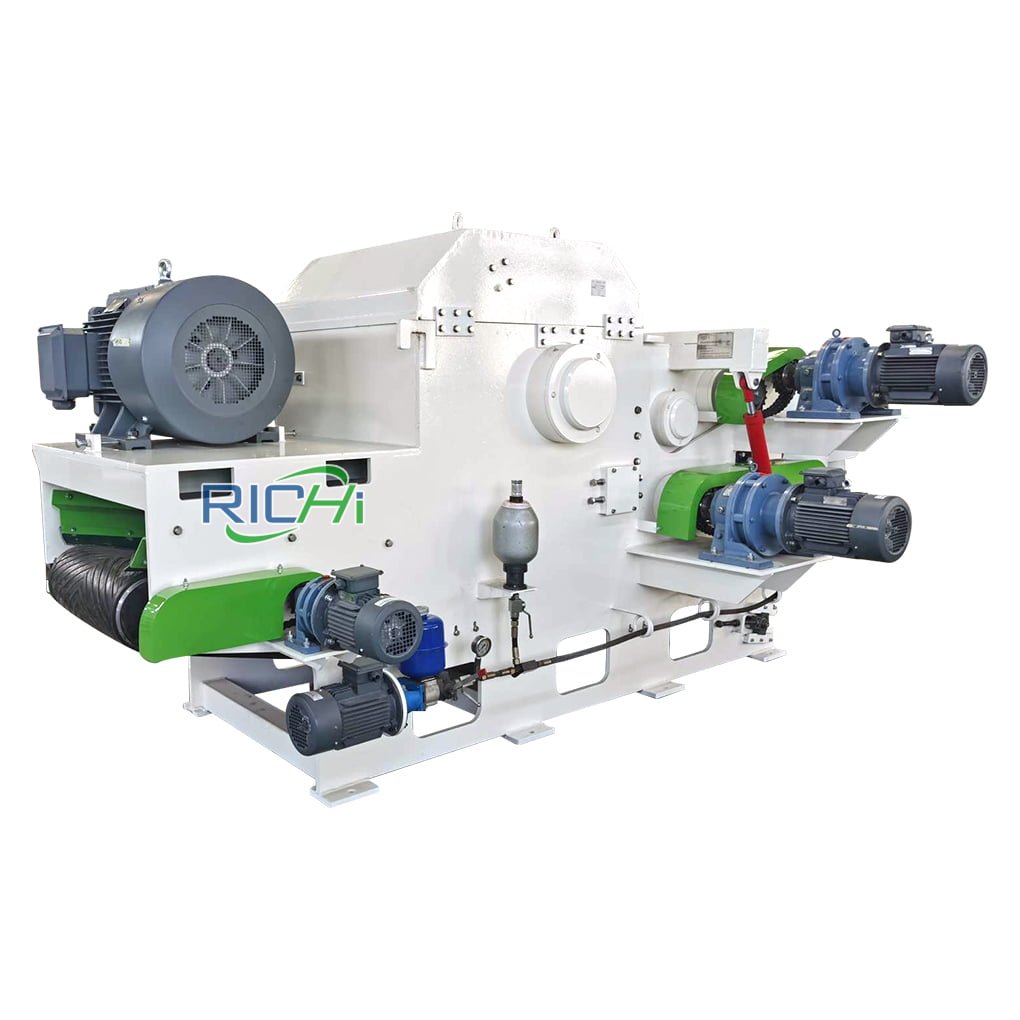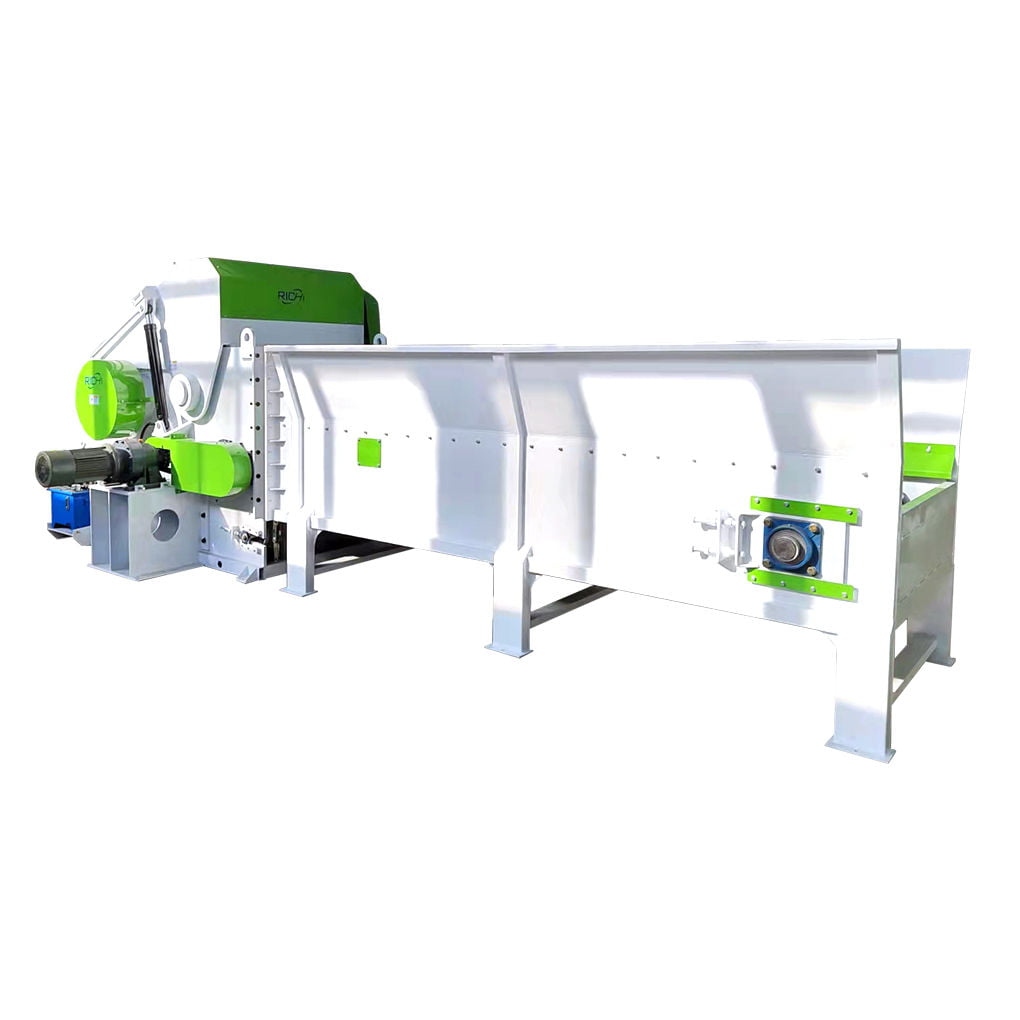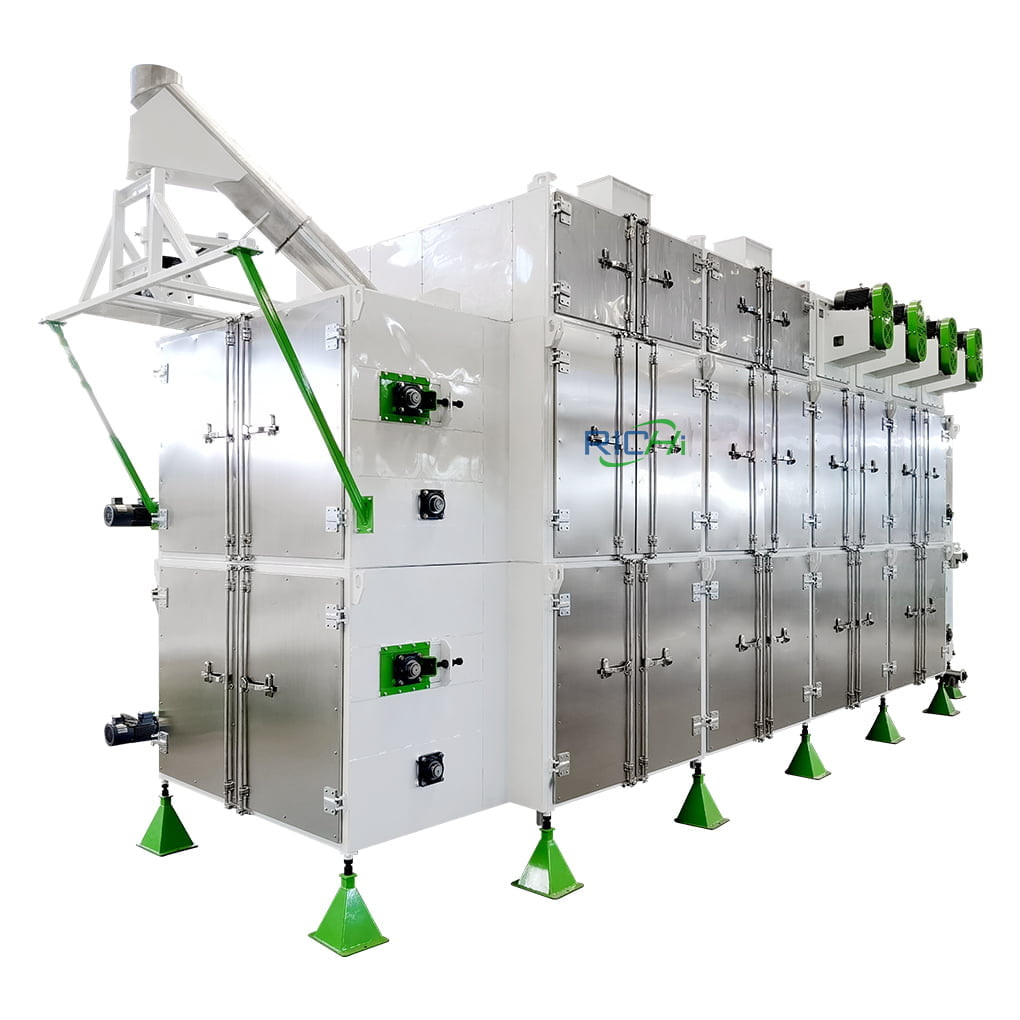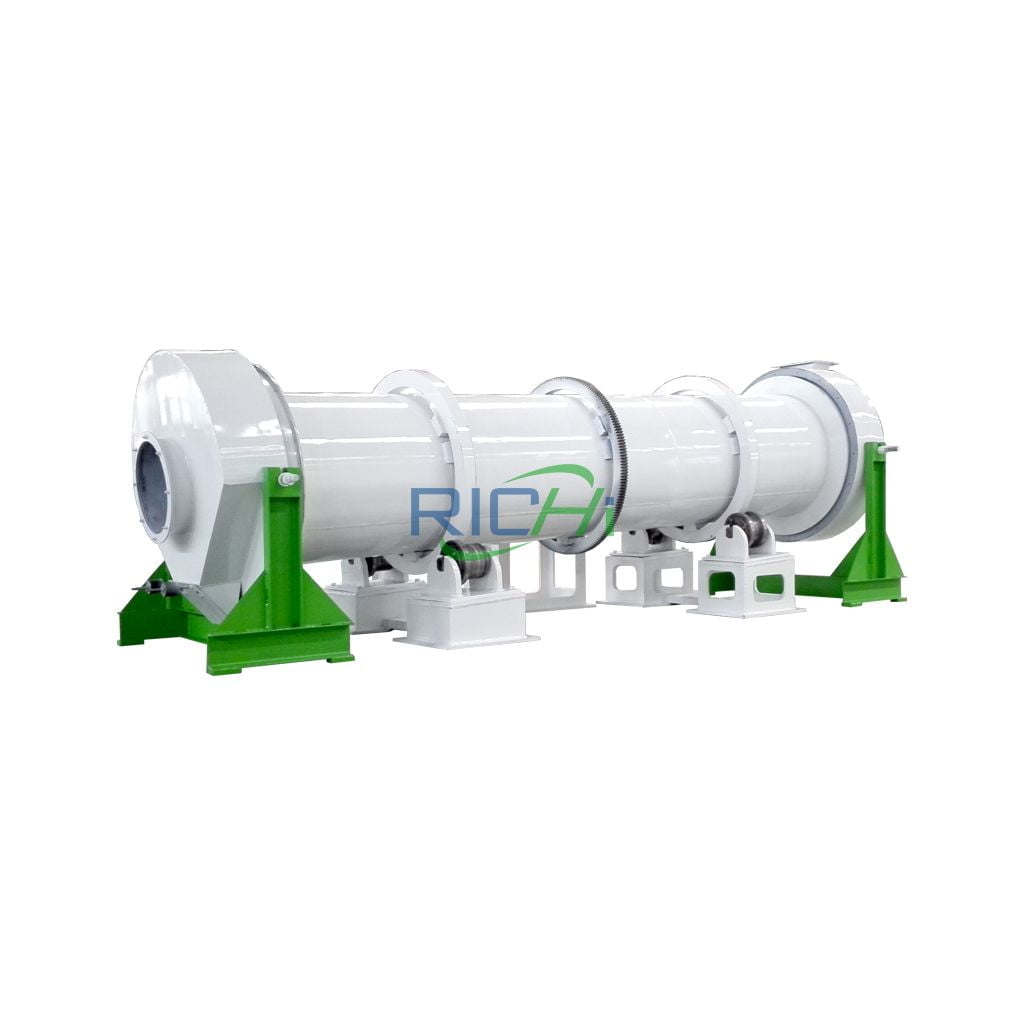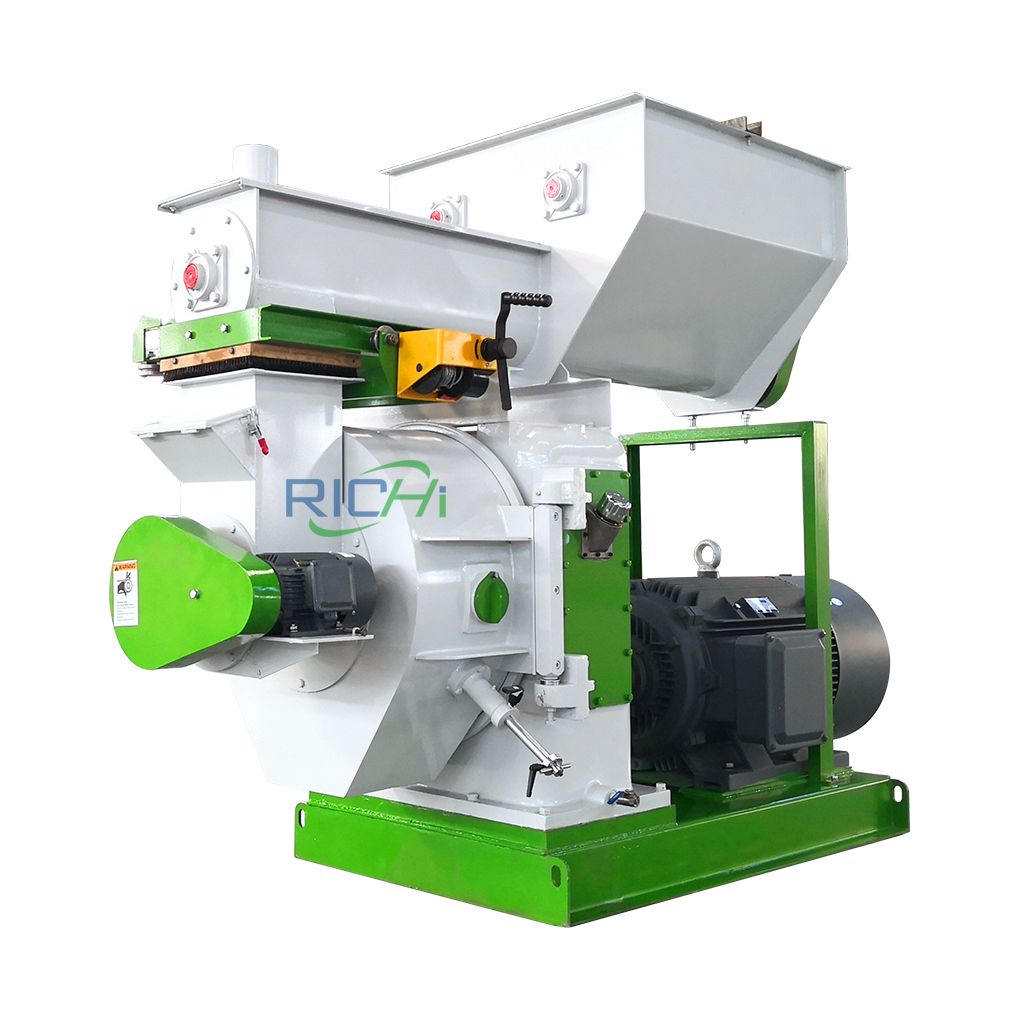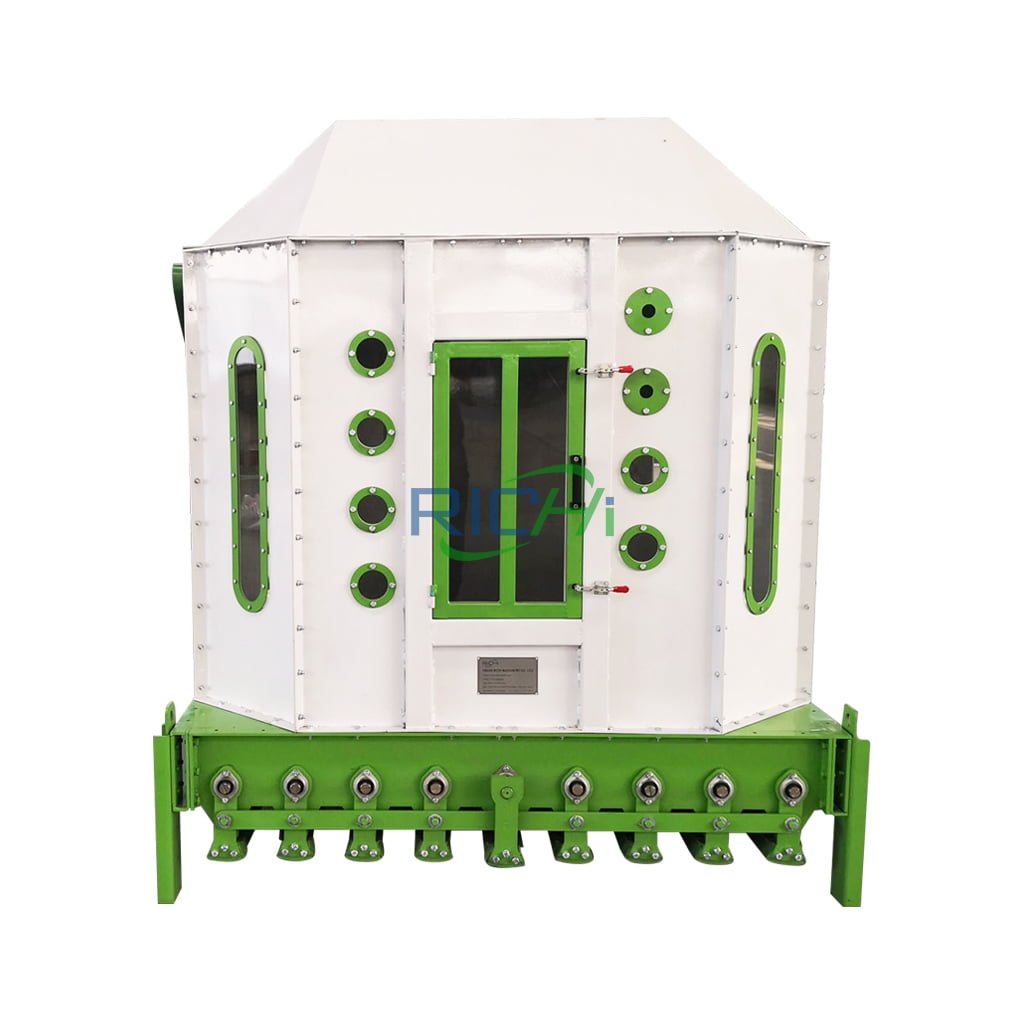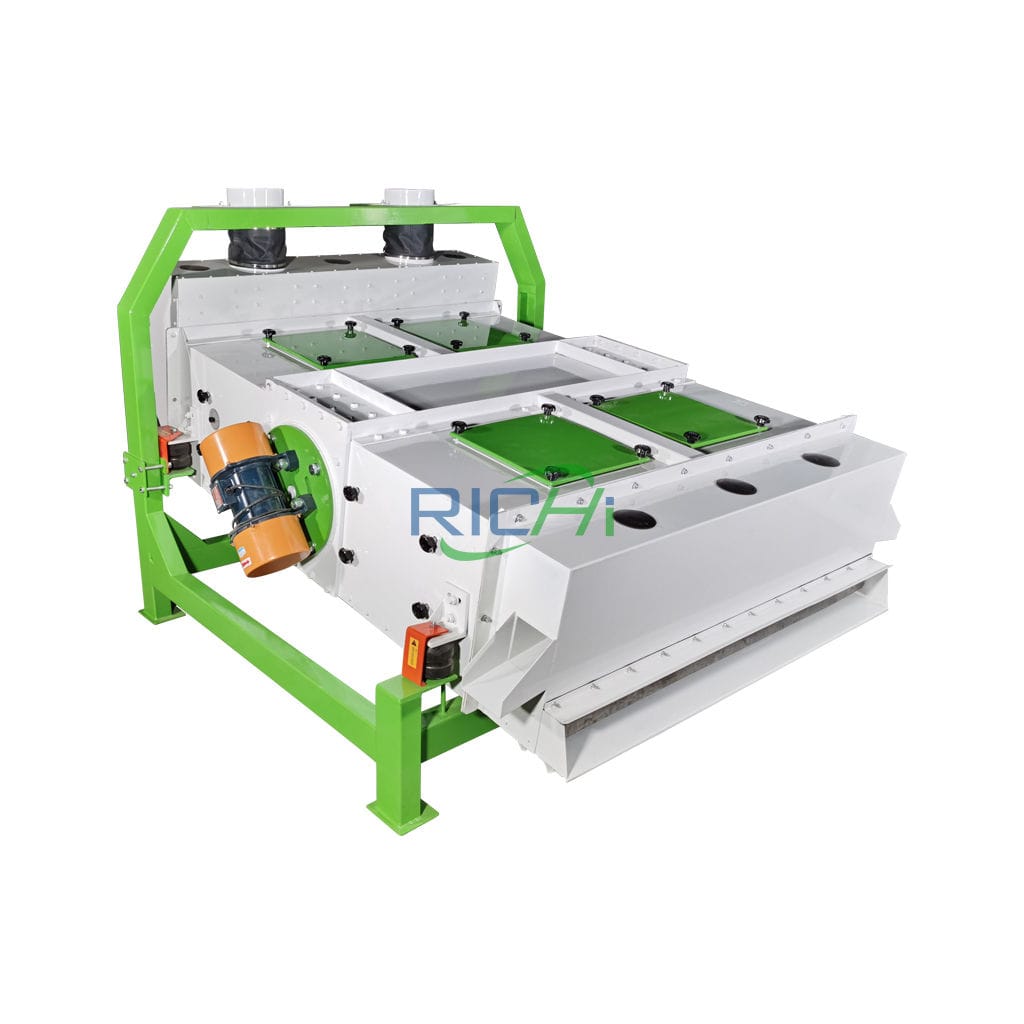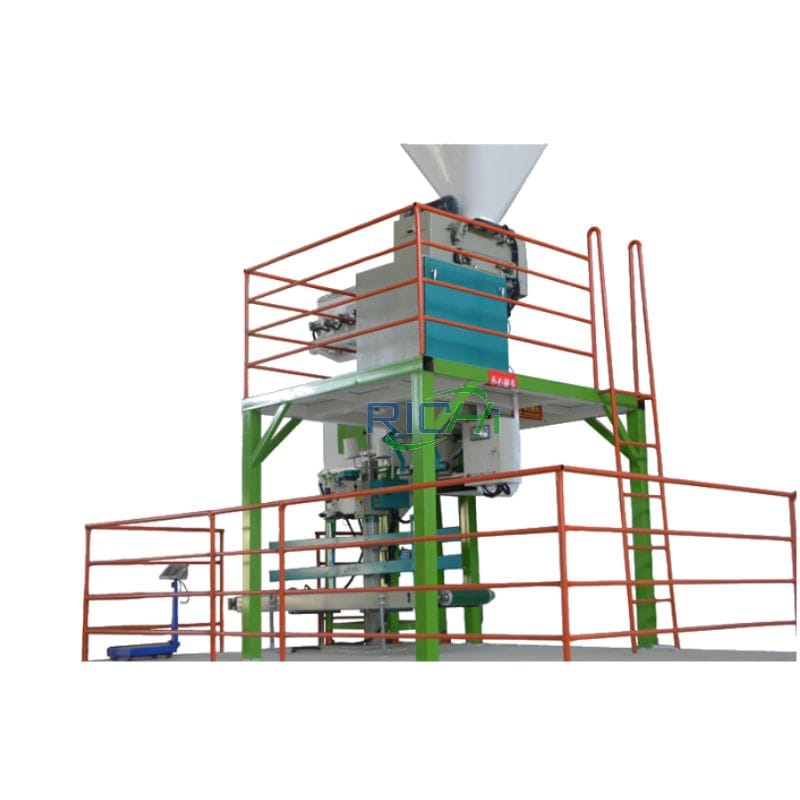
Pellet Line For Sale
Pellet line refers to a complete pelletizing system for processing biomass. It can be simple or complex, depending on the client’s needs. Are you looking for pellet line for sale? Do you want to start pellet line construction?
RICHI provides a full set of biomass pellet lines and equipment design, manufacturing, delivery, installation, commissioning, and training services. This page will introduce the content of 30-40t/h pellet line for sale

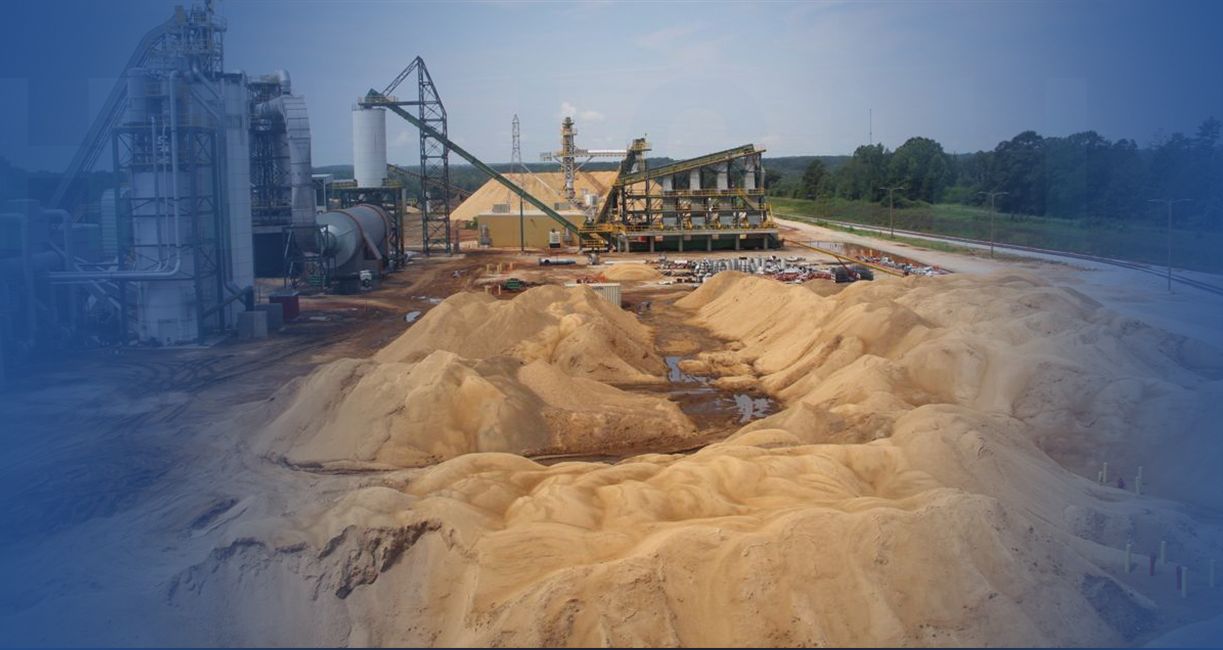
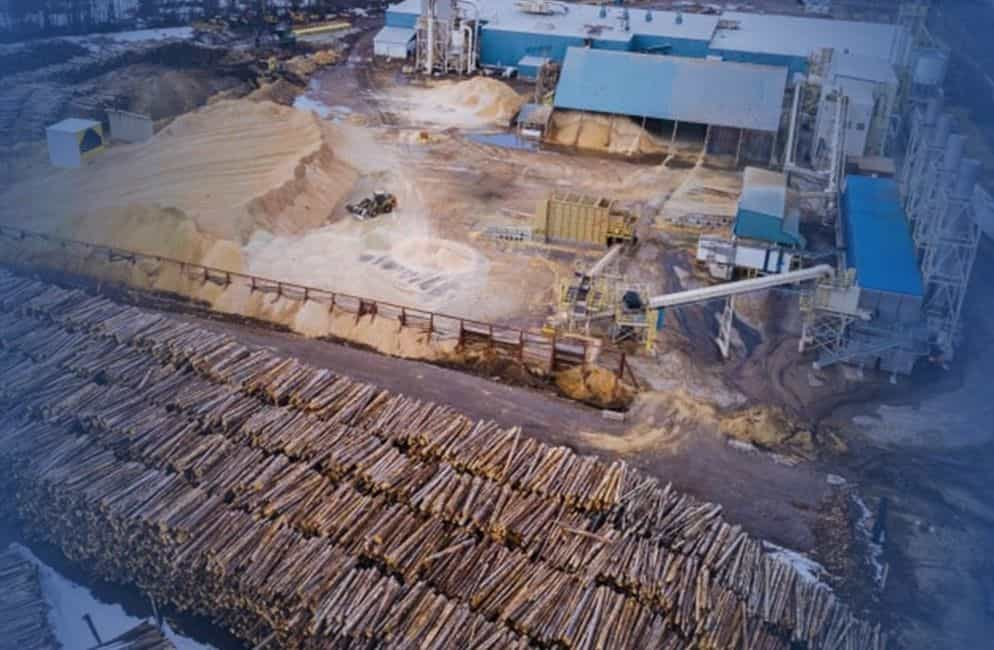
Recognizing that each customer has unique needs, we tailor our pellet production line to your specific requirements.
Whether you’re looking to make high quality biomass pellet product, improve operational safety, increase efficiency, reduce headcount, or minimize waste, our production line is customized to your goals.
At RICHI Machinery, we view ourselves as more than a service provider; we are your partner in achieving excellence. Our holistic approach to improving your operations aims for enhancements that translate into real-world business results, setting you apart in the market.
- Output: 30-40T/H
- Price: 450,000 -1,800,000 USD
- Applicable customers: energy company, fuel pellet plant, biomass pellet plant, wood pellet factory, animal feed mill plant, farms, sawdust mills, wood chip mills, lumber mills, etc.
Raw materials suitable for 30-40 t/h pellet line
The main raw materials used in pellet line include wood chips, straw, rice husk and other various agricultural and forestry wastes.
- Among them, sawdust, shavings, wood chips, veneers, boards, and templates are one of the most commonly used raw materials, mainly derived from wood processing industry, construction industry, and agricultural waste.
- Straw comes from the remaining parts of crops, including corn stalks, rice straw, hay, bamboo, miscanthus, bagasse, peanut shells, coffee shells, efb, coconut shells, etc. These wastes are usually considered waste materials, but through biomass pellets manufacturing, which can be converted into usable fuel, thereby improving resource utilization and reducing waste.
- In addition, waste crops are also one of the important raw materials for the production of biomass pellets, such as compressed rice straw, discarded fruit shells, etc., which can be processed into efficient biomass fuels, and some can be used to process feed pellets and organic fertilizer pellets.
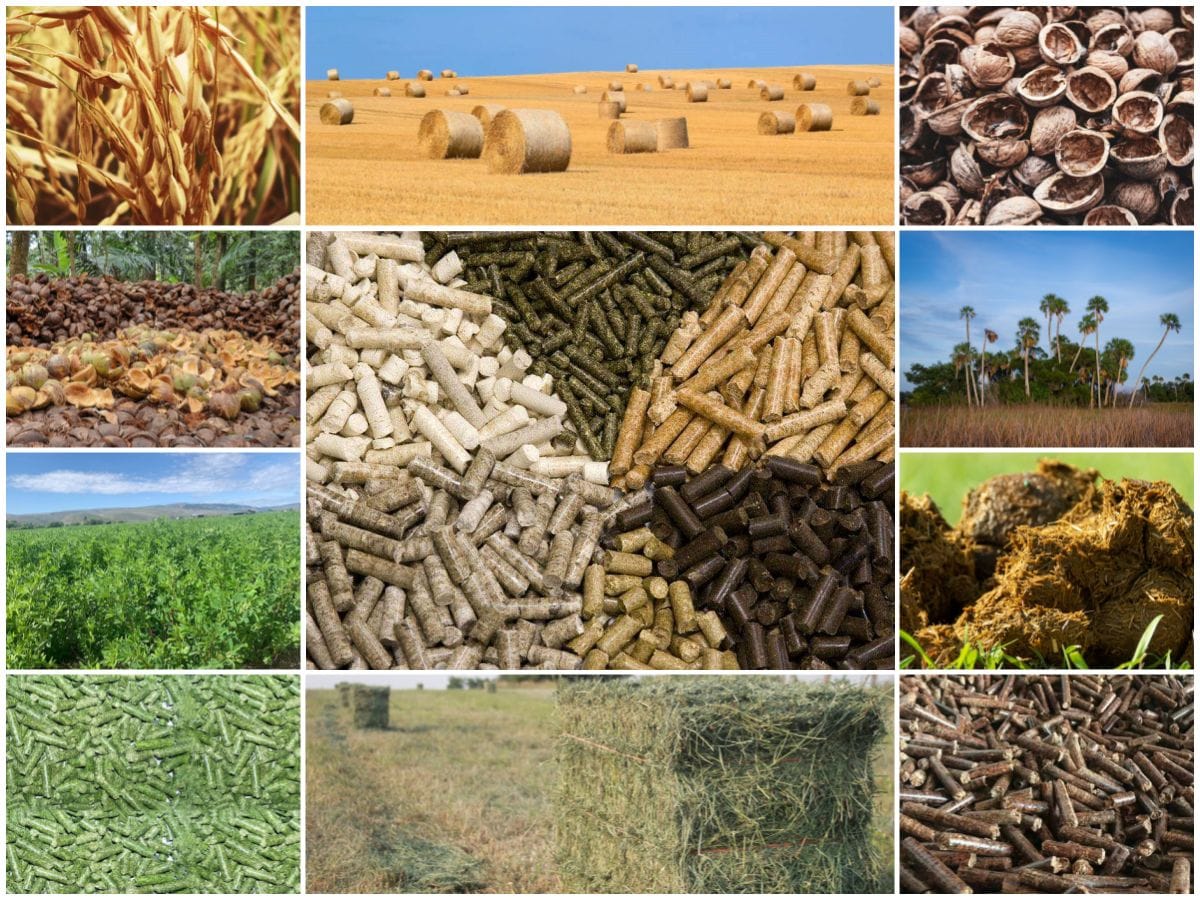
30-40 t/h pellet line Process design
We have pellet line for sale more than 100 countries around the world, so we know every project is unique. That’s why our solutions are modular and can be adapted to various requirements, ensuring flexibility and scalability. The biomass pellet production line is a complex but efficient process involving multiple key steps.
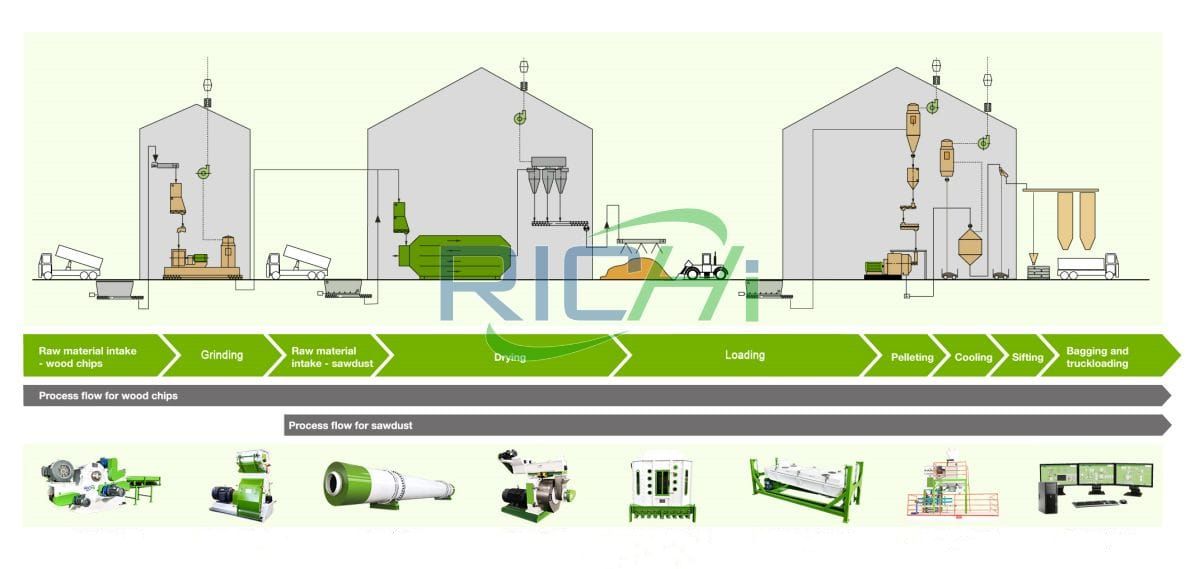
The following is its main process flow of a complete pellet line:
- Raw material preparation: This is the initial step of the pellet line. The collected raw materials such as straw, rice husk, sawdust, etc. need to be pre-processed, including removing impurities, adjusting humidity, etc., to ensure the smooth progress of subsequent processing. These raw materials also need to be chopped or crushed to reach a particle size suitable for granulation.
- Drying: Some materials contain high humidity and need to be reduced to the appropriate moisture content through drying equipment. The drying method can be hot air drying, natural air drying or other forms of heat sources. During the drying process, temperature and humidity need to be strictly controlled to avoid deformation or cracking of the pellets.
- Granulation processing: The pretreated raw materials are sent to the granulator for processing. The main process of granulation is to heat and pressure the raw materials and press them through the mold orifice plate to form granules. The selection and operation technology of the biomass pellet machine have an important impact on the quality of the granules.
- Cooling: The biomass pellet from the pelleting section need to be cooled down by cooling equipment to prevent the pellets from reabsorbing moisture or deforming.
- Screening: The cooled biomass pellets may have certain fragments or uneven pellet sizes. The screening equipment can remove unqualified pellets and improve the uniformity and quality of the pellets.
- Packaging: The screened biomass pellets can be packaged. Common packaging methods include bags, bulk, etc. for transportation and storage.
The process flow of the entire pellet line is a delicate and coherent process, and every link is closely connected and affects each other. At the same time, optimizing the process flow and improving production efficiency and product quality are also important goals of this biomass pellet line.
Please note that different pellet lines may differ based on specific biomass raw materials, equipment and production needs, but the general biomass pellet production process flow is similar. If you want to know more specific information about the pellet line for biomass, please contact us at any time to obtain professional technical support.
Equipment needed to start a 30-40 t/h pellet line
The following are the main equipment used for the 30-40t/h pellet line for biomass pellet production:
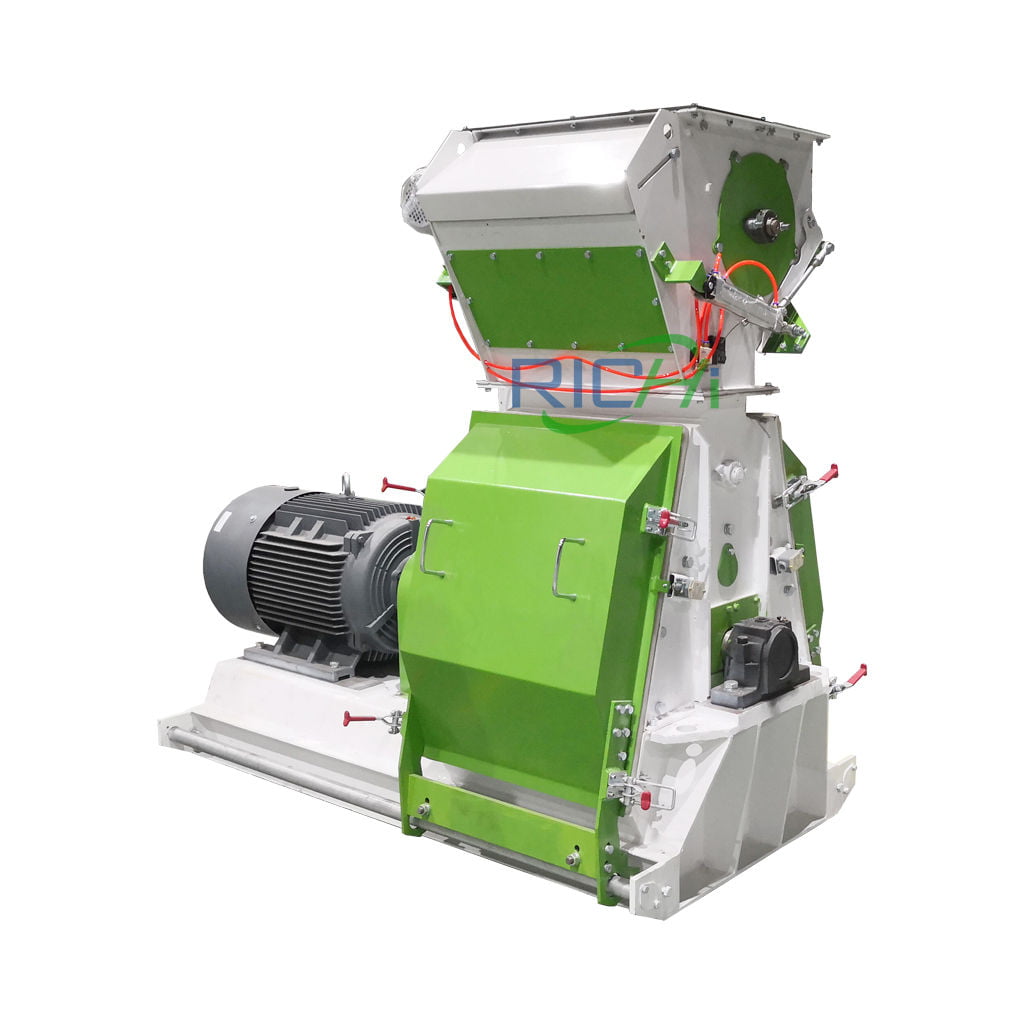
biomass Hammer Mill
Capacity:
3-25T/H
Main Power:
30-160 KW
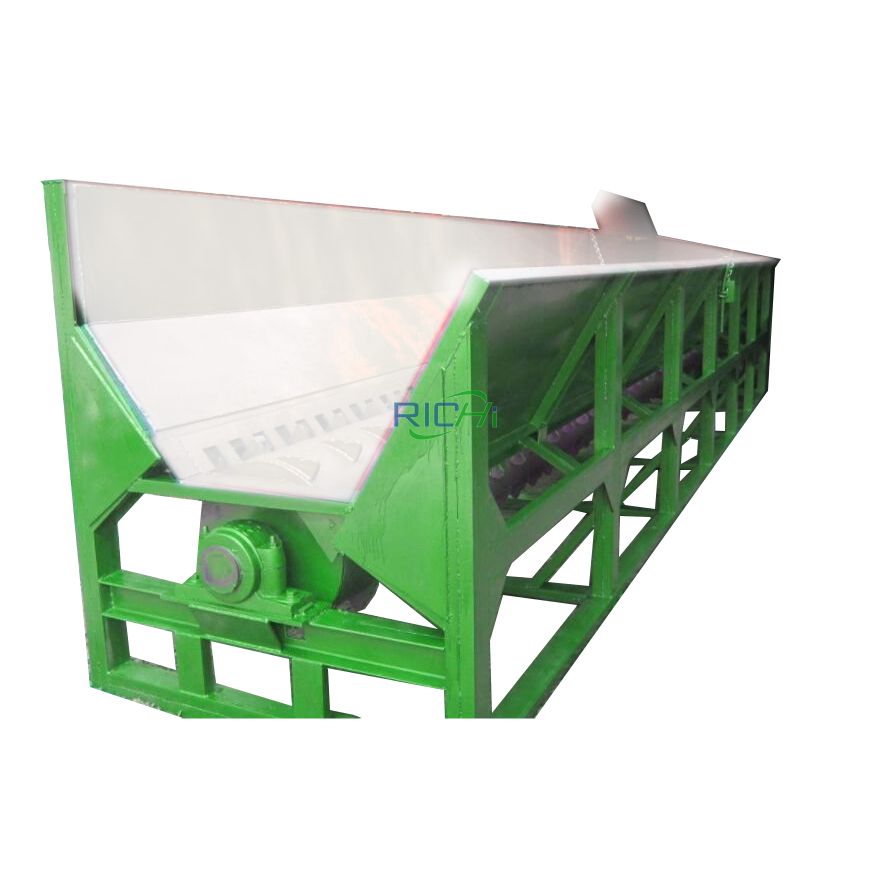
wood Debarker
Capacity:
5-15 T/H
Main Power:
7.5-11 KW
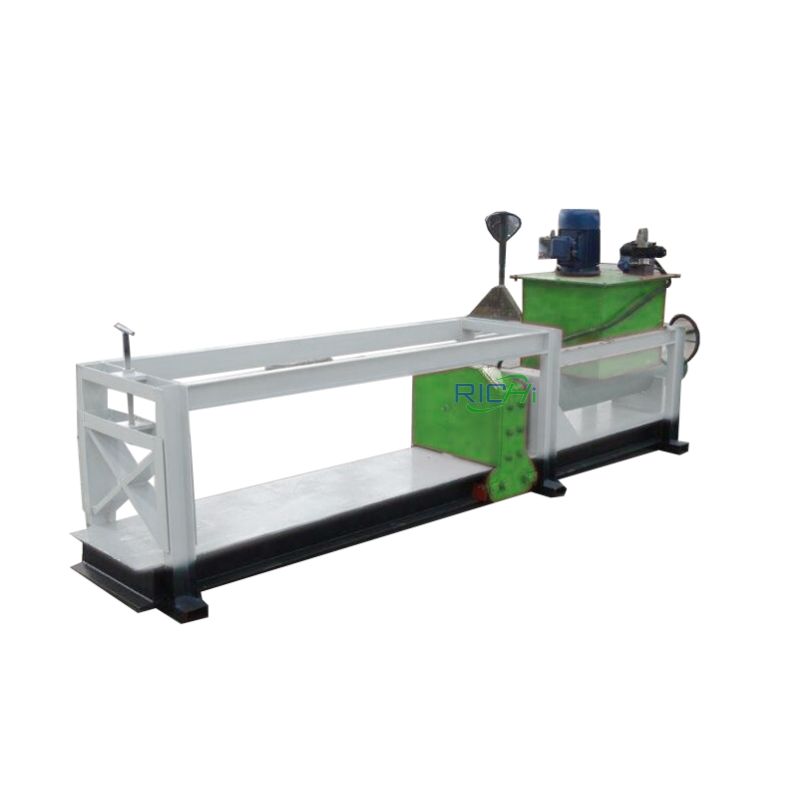
Wood splitter
Capacity:
3-12T/H
Main Power:
10-20 KW
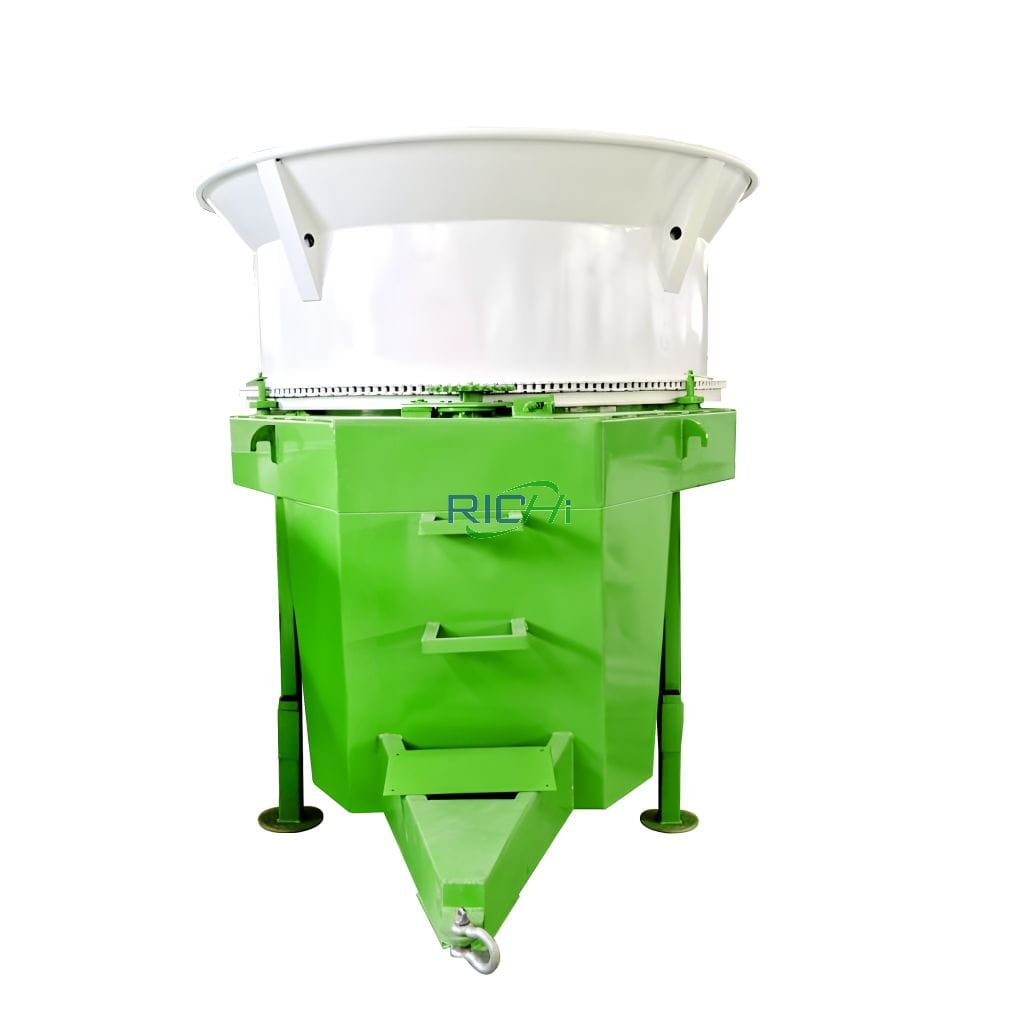
Bale breaker
Capacity:
1-20T/h
Main Power:
30-90KW
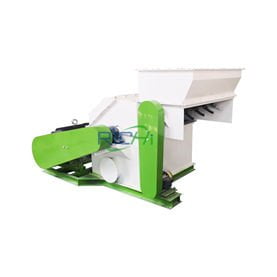
Straw Grass Crusher Machine
Capacity:
0.3-3T/H
Main Power:
22-93KW
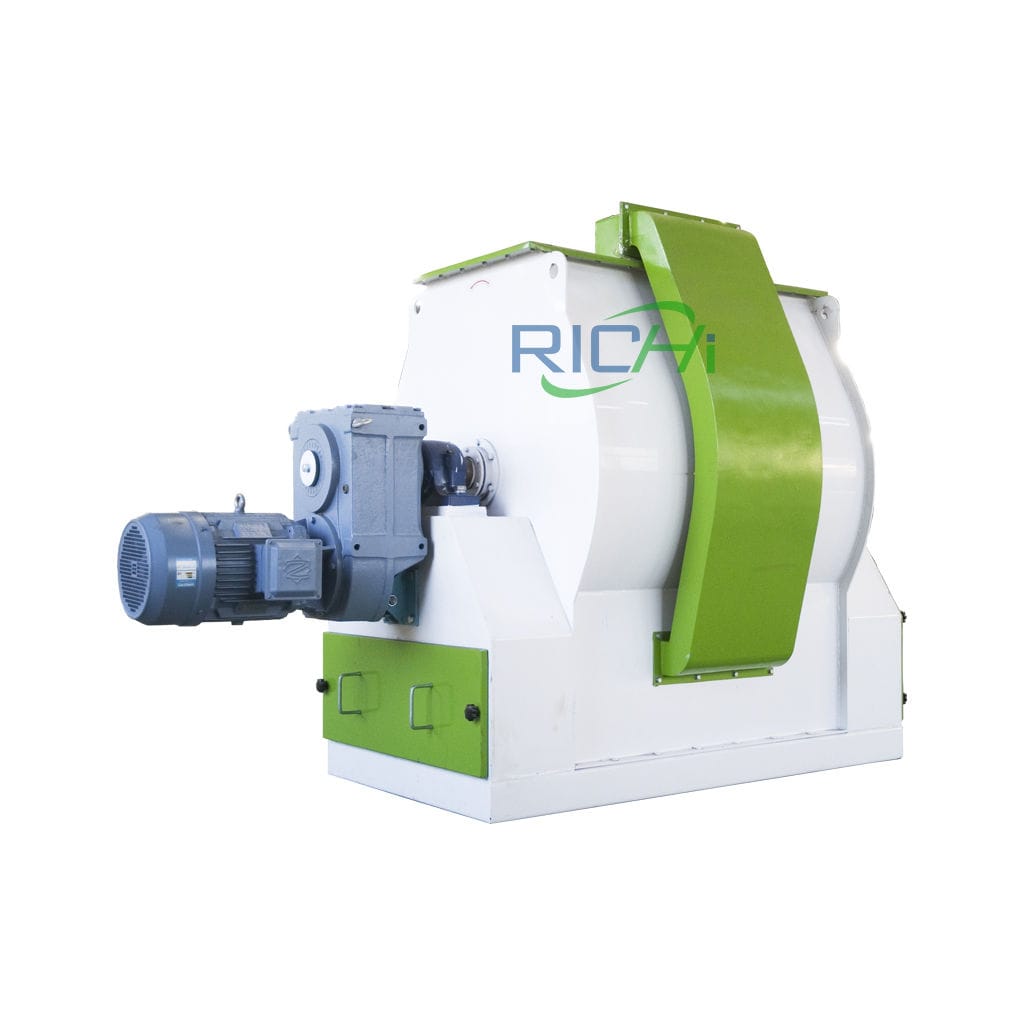
Mixing Machine
Capacity:
250-2000KG
Main Power:
4-55KW
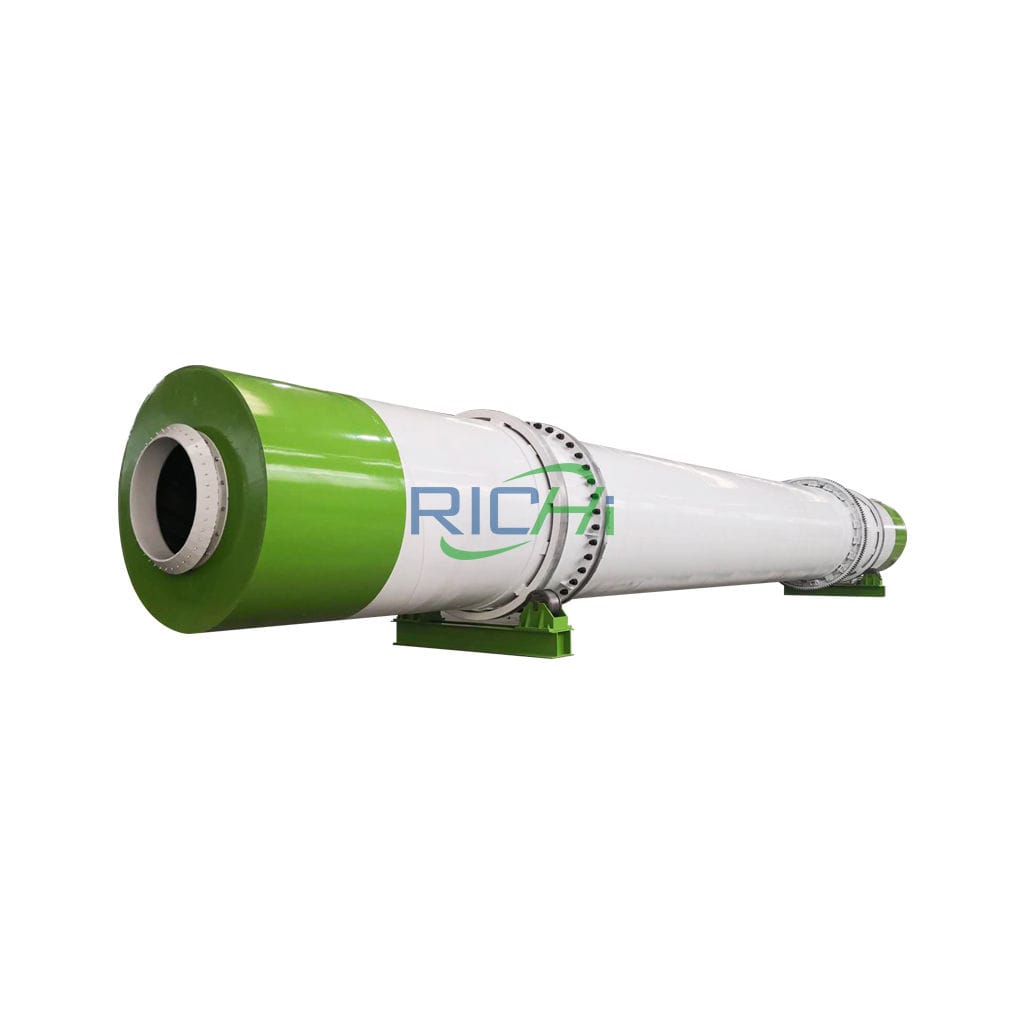
biomass Dryer
Capacity:
Customized
Rotate Speed:
3-8 R/Min
As a manufacturer focusing on the pellet line for sale, RICHI team offers custom equipment configurations, integration, automation, optimization, and installation support. Different equipment configuration options are provided in our initial feasibility studies to meet your project’s goals.
How to choose equipment for pellet line?
Choosing pellet equipment suitable for the biomass pellet manufacturers is the key to improving production efficiency.
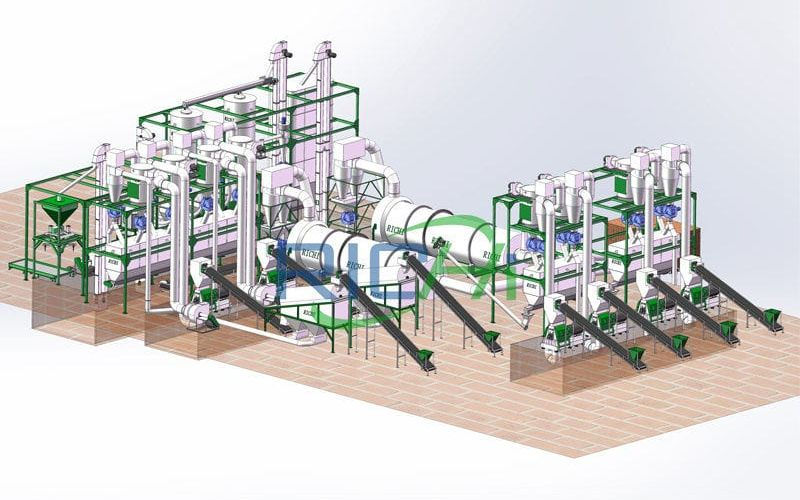
- First, the production needs must be clarified and the type and specifications of the required equipment must be determined.
- Secondly, consider the quality and reliability of the equipment and choose a proven, high-quality brand.
- At the same time, the energy consumption and environmental performance of the equipment are also important considerations.
- In addition, the maintainability and after-sales service of the equipment are also points that cannot be ignored. Within the budget, conduct a comprehensive comparative analysis to find the most cost-effective equipment.
- Finally, actual trials and on-site inspections are conducted to ensure that the equipment can meet actual production needs.
Choosing the pellet line equipment suitable for the enterprise will bring long-term benefits to the enterprise and enhance its core competitiveness.
Featured 30-40 t/h pellet line solution
Based on different customers’ raw material conditions, process requirements, and factory floor space, we have designed many unique pellet line solutions for customers. Below RICHI will list some projects for you, hoping it will be helpful to you.
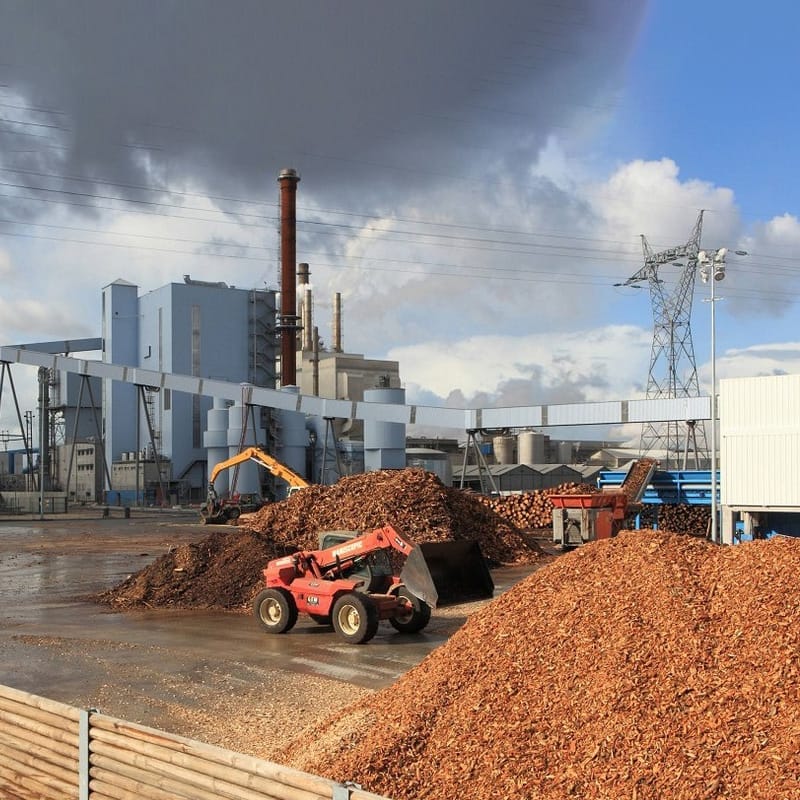
33 T/H pellet line for sale
—— RICHI MACHINERY ——
- Annual output: 100,000 tons
- Pellet production line price: 650,000 USD
- Covered area: 4000m2
- Main construction contents: production workshop, office building, finished product storage area and raw material storage area
- Work system: The biomass pelletizing line project operates for 300 days per year, 10 hours a day, and the labor quota for this project is 15 people.
- Raw material consumption: rice bran*100,000 tons/year
- Main equipment: granulator, conveyor belt, trommel screen, forklift, transformer, fan, etc.
pellet line Process flow:
- Raw and auxiliary materials entering the factory: The raw and auxiliary materials used by the enterprise are rice bran, and the raw and auxiliary materials purchased by the enterprise are all dried by the rice mill.
- Dry chaff, there is no need to dry the chaff after it is transported into the biomass pellet factory.
- Screening: The raw material chaff is screened to remove stones and other impurities in the chaff.
- Granulation: The screened chaff is shaped in the granulator through the conveyor belt. It is heated by the granulator’s own equipment. The temperature of the chaff can reach 80°C to 90℃. The extruded pellet fuel continues to move toward the die hole. The outer end is extruded, and the cutter cuts the molded pellets into the required length. Finally, the molded pellets flow out of the biomass pellet granulator and fall into the product conveyor.
- Cooling: When the granulator is discharging, the temperature of the pellets is as high as 80~90℃, and must be cooled to normal temperature before being put into storage.
- Screening and storage: The cooled biomass pellets are sent to the finished product warehouse by a conveyor. The conveying equipment is equipped with a sieve. The pellets that meet the requirements of the size enter the finished product warehouse, and the biomass pellets that do not meet the requirements fall into the lower layer of the screen. It is discharged before entering the finished product warehouse and reused in the granulation process. Qualified biomass pellets fall into the finished product bin. The bottom of the finished product bin is a funnel-shaped discharge port, which is pneumatically discharged. The finished product can be directly dropped into the packaging bag, and can be sold after being packed with a baler. The formed biomass pellets have been pressed and compacted, and basically no dust is generated during the bagging process. Unqualified products are discharged and returned to the molding process.
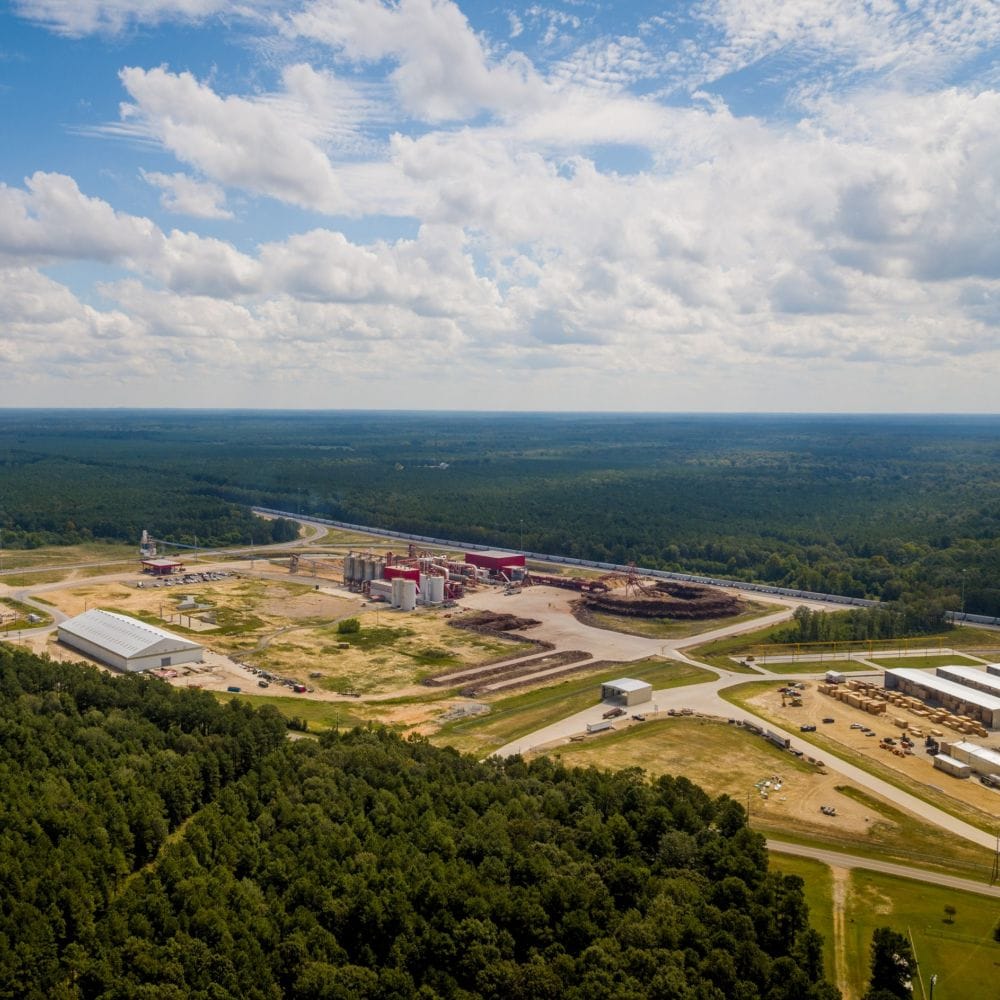
32-35 tons per hour pellet line for sale
—— RICHI MACHINERY ——
- Annual output: 100,000 tons per year
- Biofuel wood pellet production line price: 780,000 USD
- Covered area: 2784.3m2
- Main construction content: production workshop, office building
- Work system: The annual operating days of the biomass pellet production project are 300 days, 10 hours a day, and the labor quota for this project is 15 people.
- Raw material consumption: 50,000 tons/year of rice husk, 30,000 tons/year of straw, 20,000 tons/year of sawdust
- Main equipment: feeding hopper, belt conveyor, permanent magnet cylinder, material distribution auger, silo to be granulated, agri pellet machinery, fan, unloader, finished product silo, air compressor, trommel screen, etc.
pellet line Process flow:
- Raw and auxiliary materials entering the factory: The raw and auxiliary materials used by the enterprise include sawdust, rice husks, and straw. The raw and auxiliary materials purchased by the enterprise are all preliminarily crushed and dried raw materials. The moisture content of the sawdust is between 6% and 12%, the particle size is about 3mm-20mm, the moisture content of the straw is about 12%-18%, the particle size is about 5mm-30mm, the moisture content of the rice husk is about 8%-14%, and the particle size is about 4mm- 7mm. Wood chips, rice husks, and straw do not need to be dried after being transported into the factory. Since straw and rice husk have certain seasonality, the use of raw and auxiliary materials is also subject to seasonal limits. During the harvest season of corn and rice, the sources of corn straw and rice husk are abundant. Enterprise production mainly uses straw and rice husk. Mainly husks, with a small amount of sawdust. In the season when straw and rice husk are not available, the company only uses sawdust for production.
- Pelletizing: The raw material sawdust, rice husk and straw are lifted by the belt conveyor, sent to the warehouse to be granulated through the material distribution auger, and formed in the granulator. The moisture content of the raw materials is no more than 18%, and the particle size is no more than 7mm. No additives are needed. The raw materials enter the biomass granulator from the granulator bin. Through heating, the temperature of the powder can reach 80°C to 90°C, and the extruded pellet fuel continues to move out of the die hole. End extrusion, the cutter cuts the molded pellets into the required length, and finally the molded biomass pellets flow out of the granulator and fall into the product conveyor.
- Cooling: When the biomass pellet machine is discharging, the temperature of the pellets is as high as 80~90°C, and must be cooled to normal temperature before being put into storage.
- Screening and storage: The cooled biomass pellets are sent to the finished product warehouse by a conveyor. The conveying equipment is equipped with a sieve. Straw pellets that meet the requirements of the size enter the finished product warehouse, and the biomass pellets that do not meet the requirements fall into the lower layer of the screen. , discharged before entering the finished product warehouse, and reused in the granulation process. Qualified biomass pellets fall into the finished product bin. The bottom of the finished product bin is a funnel-shaped discharge port, which is pneumatically discharged. The finished product can be directly dropped into the packaging bag, and can be sold after being packed with a baler. The formed biomass pellets have been pressed and compacted, and basically no dust is generated during the bagging process. Unqualified products are discharged and returned to the molding process.
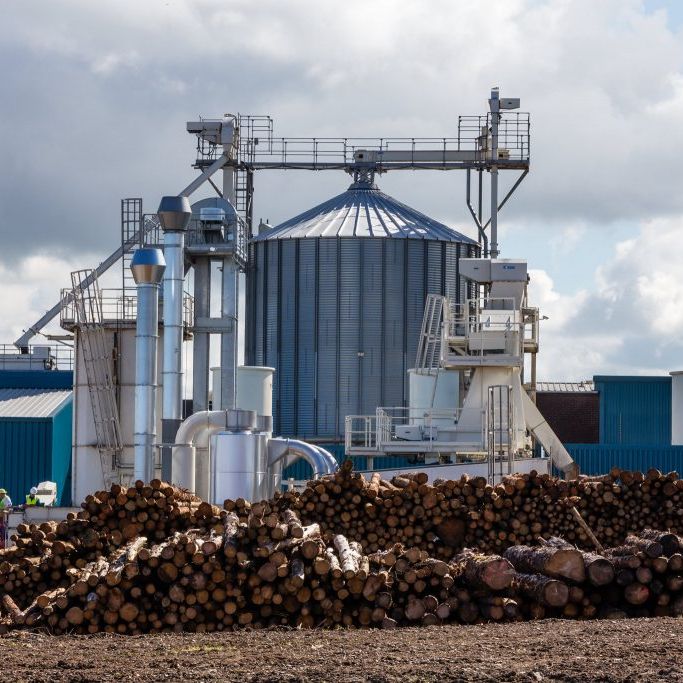
35-38 tons per hour pellet line for sale
—— RICHI MACHINERY ——
- Annual output: 100,000 tons
- Production line price: 910,000 USD
- Area: 30 acres
- Work system: Labor capacity: 10 people. Adopting a one-shift system, working 8 hours a day, 350 days a year, 2,800 hours.
- Raw material consumption: straw 30,000t/a, peanut shells 30,000t/a, sawdust 40,000t/a
- Energy consumption: water consumption is 175m3/a, electricity consumption is 100,000kw.h
- Main equipment: biomass pellet machine, raw material screening machine, loader, forklift, crusher, drying machine, etc.
pellet line Process flow description:
The raw materials of the pellet machine line project are purchased agricultural waste, straw, etc., which are divided into bulk and block shapes and are transported to the raw material storage yard by truck.
- Raw material screening and crushing: Screen out unqualified large pieces of wood offcuts that cannot be pressed, crush them and then dry and press them; the qualified offcuts screened out directly enter the drying process.
- Drying: Some raw materials have excessive moisture content when purchased and need to be dried before being pressed into granules. The drying oven is electrically heated.
- Pressure granulation and cooling: Granulation is completed in the biomass pellet machine. There is a heating ring inside the pellet machine, which can raise the temperature to about 350°C. In order to ensure smooth surface, high density and no cracks, the appropriate molding temperature is selected according to the type of raw material and moisture content. Its level can only be determined through field testing. It varies according to the shape of the material and the model of the heater, generally between 140°C and 500°C.
- The exhaust port of the pellet line project’s granulation system is equipped with a dust collector, with an air volume of 5000m3/h. The dust collected by the dust collector enters the granulation system for reuse. After the exhaust gas is processed by the bag dust collector, it is then exhausted through a pipe with a height of not less than 20m. cylinder discharge. The temperature of the pressed pellets is generally between 55°C and 70°C and needs to be cooled before packaging. Air cooling is used for cooling.
- Packaging and storage: After cooling, it can be packed and stored for sale.
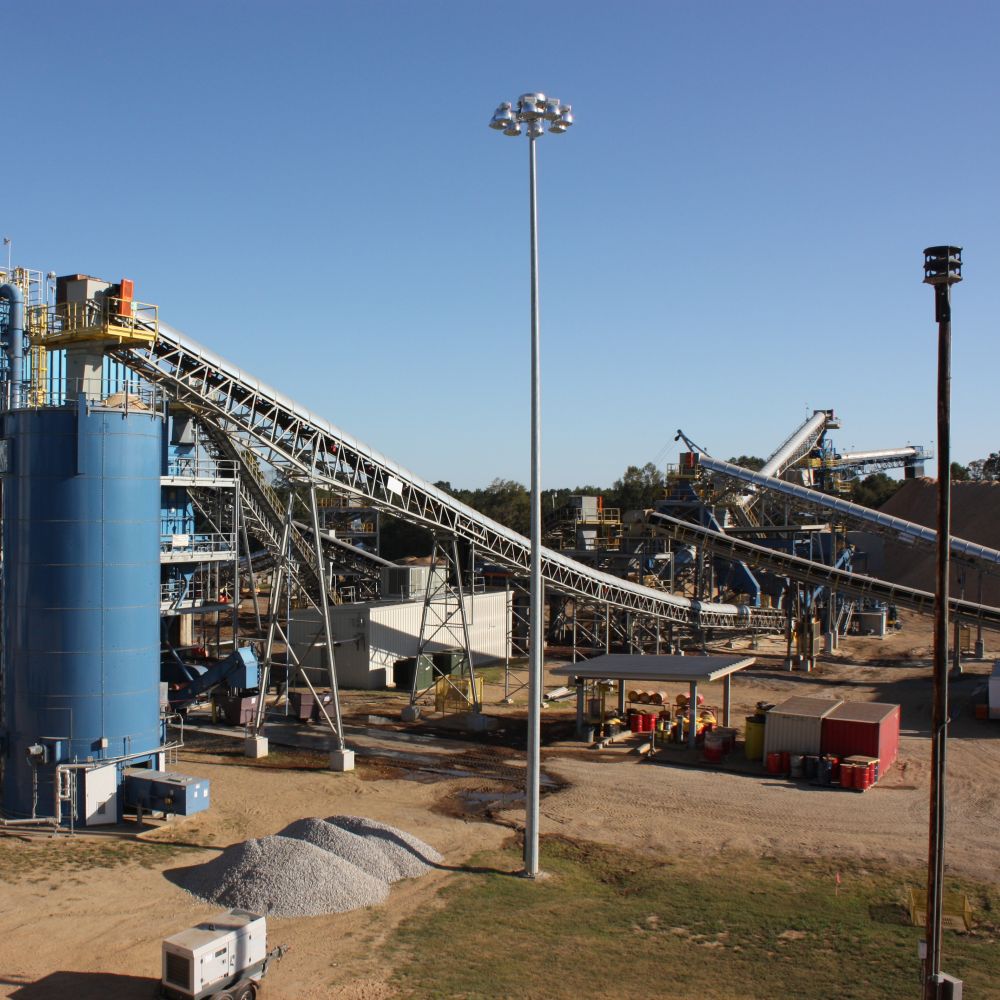
37-38 t/h pellet line for sale
—— RICHI MACHINERY ——
- Annual output: 90,000 tons per year
- Production line price: 1,300,000 USD
- Covered area: 3500m2
- Main construction contents: crushing room, production workshop, office, finished product temporary storage area, office, raw material storage yard, finished product storage yard
- Work system: 10 employees. The project has about 300 working days per year, one shift, 8 hours each.
- Raw material consumption: waste wood 90046.69t/a, moisture content in the factory ≤30%
- Energy consumption: water 150t/a, electricity 3 million kwh
- Main equipment: crusher, conveyor belt, pulverizer, auger, raw material warehouse, bucket elevator, biomass fuel pellet making machine, air cooler, vibrating screen, finished product bin, etc.
pellet line Production process:
The raw materials for biomass pellet fuel production include bamboo chips, wood and straw.
- Cleaning and Chipping: The raw materials used in this pellet mill line project have been briefly processed before entering the market, and impurities such as iron nails are manually removed. Large pieces of raw materials such as waste wood are fed to the crusher by forklifts for crushing to obtain crushed materials with a particle size of about <120mm. An iron remover is installed at the outlet of the crushed materials to magnetically separate iron and other impurities that may be present in the crushed materials. After crushing, Materials are stacked between the crushing area and the crusher feed port for easy transportation. This process produces dust and noise, as well as a small amount of scrap iron filings.
- Crushing and silo: The crushed materials are fed from the loader to the feed port of the crusher (pit type, the feed port is parallel to the ground). When the crusher is running, the crushed material is transported to the crusher by a belt for crushing to obtain crushed material with a particle size of about <5mm. An iron remover is installed at the outlet of the crushed material to magnetically separate iron and other impurities that may be present in the crushed material and then separate them through a cyclone. The material is discharged and then transported to the raw material warehouse via a closed belt for temporary storage until subsequent granulation.
- Granulating and forming: The crushed material in the silo is transported to the closed discharging auger through a closed distributing auger, and then sent to the feeding chamber of the granulator by the elevator. It is evenly distributed under the joint action of the distributor and scraper. The floor is laid on the die, and the granulator squeezes the wood chips into pellets through extrusion. During the extrusion process, the material friction generates heat (the temperature is about 80~90°C), causing the lignin contained in the raw material to soften and become sticky. As the resultant force increases, the softened lignin and the inherent cellulose in the biomass work together to gradually shape the biomass. After a certain period of time, it is extruded in a cylindrical shape. The rotating cutter cuts the material and sends it out through the discharge port.
- Air-cooling screening, packaging and packaging: The granules coming out of the granulator outlet have a high temperature, a loose structure, and are easily broken. They must be cooled to room temperature by a counter-flow air cooler and then transported to the granulator by a belt. The vibrating screen screens out unqualified products with a pellet size of <8 mm to ensure the factory quality of biomass pellet fuel. Qualified products are sent to the finished product warehouse via the elevator, bagged and sealed for sale.
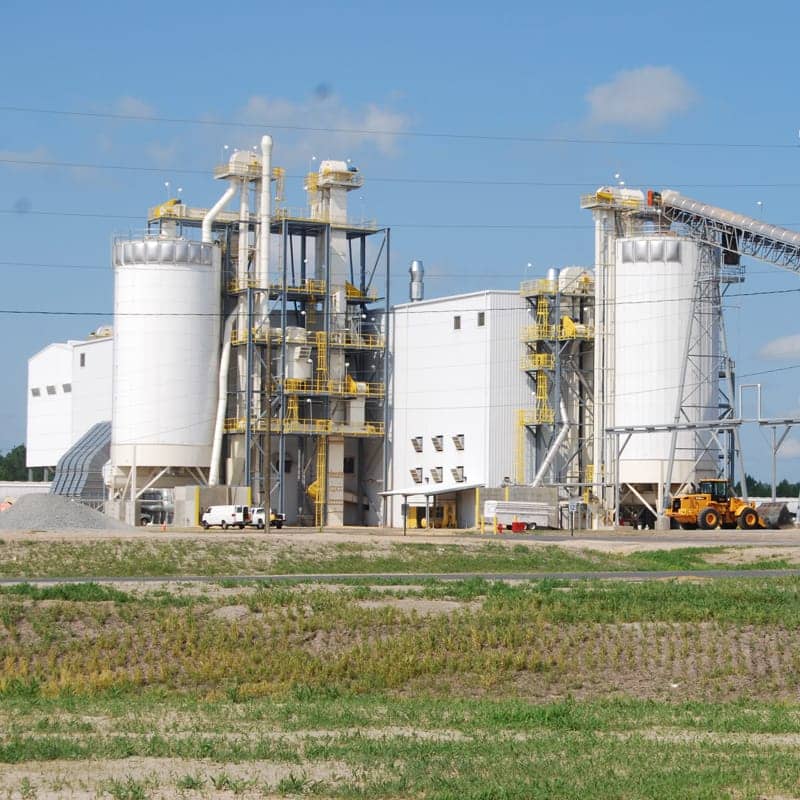
40-42 T/H pellet line for sale
—— RICHI MACHINERY ——
- Annual output: 100,000 tons
- Pellet line price: 86 million yuan
- Covered area: 2,300,000 USD m2
- Main construction content: factories, offices, guard rooms, power distribution rooms and other facilities
- Work system: The project has a capacity of 80 people, implements three shifts of production, each shift is 8 hours, and works 300 days a year.
- Raw material consumption: 200,000 t/a of crop straw (including cotton straw, corn straw, wheat straw, etc.), 100,000 t/a of garden waste (including wood chips, sawdust, branches, fruit shells, coconut shells, etc.)
- Energy consumption: electricity 2.8123 million kWh/a, water 1110m3/a
- Main equipment: wood chipper, multi-function crusher, storage and supply silo, biomass wood pellet mill, drumdryer, cooler, rolling screening machine, mixer, screening machine, packaging equipment, conveying system, grab forklift, forklift , crushing and bundling machine, etc.
pellet line process design:
- Chipping: After the raw materials enter the pellet mill plant, they are first put into the wood chipper for rough crushing. The materials are chipped to obtain materials with smaller particle sizes, which facilitates the subsequent crushing process.
- Crushing: The chipped materials are transported to the multifunctional crusher through a closed auger conveying system. The feeding port of the crusher is in a closed state, and the materials are crushed to obtain powdered materials. The crushed materials are screened by the upgrading screening machine to screen out the small amount of soil carried in the materials.
- Mixing: The crushed and screened materials are transported to the mixing mixer through the auger conveying system for closed mixing and mixing to make the texture uniform.
- Granulation: The mixed raw materials enter the pellet molding machine through the auger conveying system. The rotation of the main shaft in the molding machine drives the pressure roller to rotate. After the rotation of the pressure roller, the material is forced to be extruded from the ring die hole into blocks or granules, thereby obtaining biomass pellets. The formed biomass pellets enter the storage and supply silo.
- Drying: The biomass pellets in the storage and supply bin are sealed and transported into the drum wood chip dryer for drying and sterilization according to the set time and amount. The drum dryer is a cylinder that is slightly inclined to the horizontal direction. Materials are added from the higher end. Electrically heated high-temperature hot air flows into the cylinder parallel to the materials. As the cylinder rotates, the materials are evaporated due to the action of gravity.
- Cooling: The formed biomass pellets obtained after drying have a high temperature and are transported to the cooler by the auger conveying system. The cooled pellets can then enter the powder screening process.
- Powder sieve: The cooled biomass pellets are transported to the rolling screening machine through a closed auger conveying system. The rolling screening machine is equipped with holes of different specifications. The pellets are turned and rolled in the rolling screening machine, and products of different specifications are discharged from the corresponding holes, thus To achieve the purpose of product classification.
- Packaging and storage: Use packaging equipment to package the sifted biomass pellets into ton bags according to different specifications and wait for sale.
When choosing a production line, it is crucial to understand the actual cases and user feedback from equipment manufacturers. Evaluate the performance, stability and reliability of the production line with reference to actual applications from companies in the same industry or similar size.
With the increasing awareness of environmental protection, customers should pay attention to the environmental performance and safety design of equipment when choosing a production line. Priority is given to production lines that comply with national and industry environmental protection standards, energy conservation and emission reduction.
How to build a 30-40 t/h pellet line?
What conditions are needed for a pellet line construction? You need to know the following information!
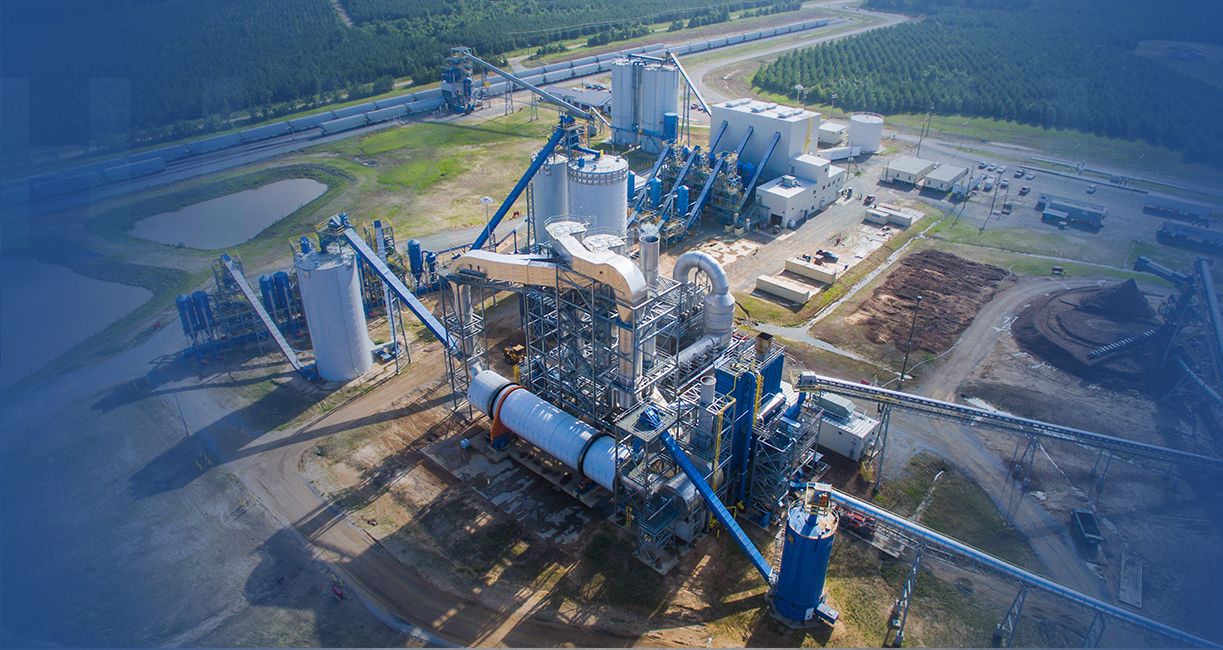
Pellet line construction needs to meet the following conditions:
- Procedures: To open a biomass waste pellet line you need to apply for a business license, tax registration certificate, environmental impact assessment report and other procedures, and also need to obtain approval from government departments.
- Site selection: To choose a suitable site, you need to meet the following conditions: convenient transportation, close to raw materials and market demand, flat site, and suitable for building a biomass pellet plant.
- Equipment and processes: According to market demand and raw material conditions, select appropriate pellet line equipment and processes to ensure production efficiency and product quality.
- Raw material supply: Find a stable source of raw material supply to ensure smooth production.
- Capital investment: Opening a biofuel pellet line requires a certain amount of capital investment, including site rental, equipment purchase, personnel wages, raw material procurement and other expenses.
- Market demand: Understand market demand, formulate reasonable sales strategies, and ensure smooth product sales channels.
- Environmental protection and safety: When opening a biomass pellet making plant you need to pay attention to environmental protection and safety issues, abide by the relevant laws and regulations of the country where you are located, and ensure that no environmental pollution and no safety accidents occur during the production process.
In short, pellet line construction needs to meet a series of conditions and requirements, including procedures, site selection, equipment and processes, raw material supply, capital investment, market demand, environmental protection and safety, etc.
Only by fully understanding and meeting these conditions can a turnkey pellet plant be successfully opened and profitable.
30-40 t/h pellet line investment
Generally speaking, the price of a 30-40t/h pellet line is between 450,000 -1,800,000 USD.
Investment in biomass pellet manufacturing plants is mainly used to purchase land, factories, machinery and equipment, environmental protection facilities, etc. It also needs to be invested in technology research and development, personnel training and marketing. Specifically, investment in biomass wood pellet production lines involves the following aspects:
- Land: The construction of a pellet line for biomass requires a certain area of land, so the purchase cost of land is part of the investment in the biomass pelletizing plant. The larger the scale of the pelleting line and the larger the area, the greater the amount of investment involved.
- Construction: Construction includes factories, warehouses, laboratories, etc. The construction costs will vary according to different needs.
- Process and equipment: Biomass pellet equipment includes biomass pellet presses, crushers, slicers, screening machines, coolers, packaging machines, etc. The total price of these equipment will vary with different processes and equipment configurations. Different equipment has different prices, and more advanced equipment requires more capital investment.
- Labor, water and electricity costs: Labor costs and water, electricity and energy consumption costs are essential. Differences in housing prices, labor and other costs in various regions will also affect the size of workshop investment.
Wondering if a pellet line solution is right for your biomass pellet production business?
How to choose 30-40 t/h pellet line and equipment?
1. Security
The pellet production line should have good safety performance to ensure the safety of workers.
2. Technical
The pellet line should adapt to the technical index requirements of pellet processing and should comply with the pellet processing process design requirements; the noise, vibration and pollution generated must comply with relevant policies and regulations.
For equipment that produces waste residue, waste liquid, waste gas and other pollution, you should also know whether there are supporting treatment devices, and choose them in accordance with environmental protection standards.
3. Reliability
The pellet line equipment should be able to operate stably and reliably to ensure that the pellet production line operates continuously and normally, and the actual production capacity meets or slightly exceeds the design requirements.
In order to ensure the reliability of equipment operation, when choosing a manufacturer, you should pay attention to obtaining sufficient relevant information about the proposed purchase. Such as detailed technical parameters, such as the main structure material, the main working parts material and processing technology, the performance, brand, manufacturer of the main control components, etc.
4. Applicability
It is necessary to clarify the equipment’s requirements for site, power supply, heat source, water source, etc. When it is necessary to work with post-process equipment, attention should be paid to factors such as whether its signal input and output match, and whether its production capacity is matched.
5. Economical
Economic considerations must first be effective under the premise of the first four items; secondly, one-time input and operating costs must be comprehensively considered; the input-output ratio must be considered, and strive to achieve: less investment, high output, high efficiency, and achieve good economy effect.
6. Advancedness
When the main indicators can meet the requirements, technologically advanced equipment should be selected as much as possible to avoid unnecessary trouble in operation, maintenance and parts supply.
7. Strength of equipment manufacturers
Try to choose pellet line manufacturers with larger business scale, better after-sales service and better reputation to ensure good after-sales service.
videos of pellet line for sale
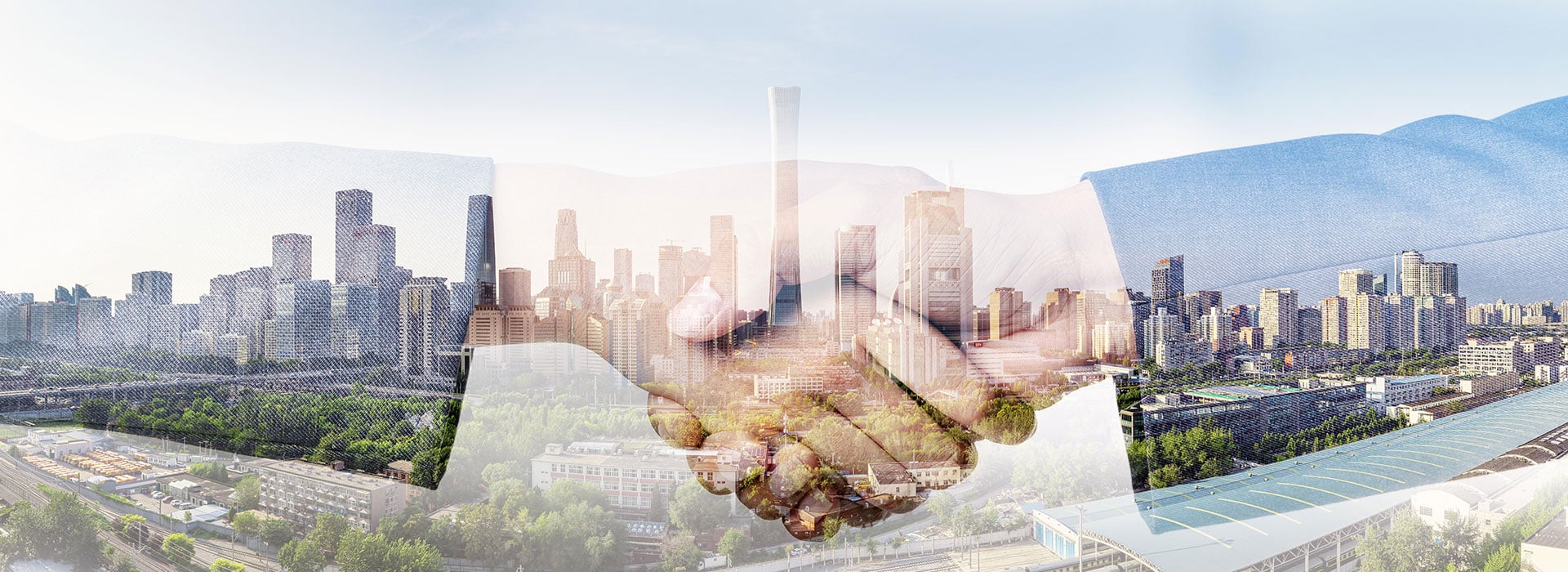
Customized pellet line for sale
Richi Machinery specialize in pellet line for sale, our commitment to sustainability and lean manufacturing principles ensures that your pellet line is not only efficient but also environmentally friendly.
By eliminating waste and improving workflow, we help you achieve a leaner, more agile operation that is prepared to meet the challenges of a fast- paced market.
Get in touch with our experts today to learn how we can provide a high-capacity, high-return pellet line. (Find RICHI on youtube)
